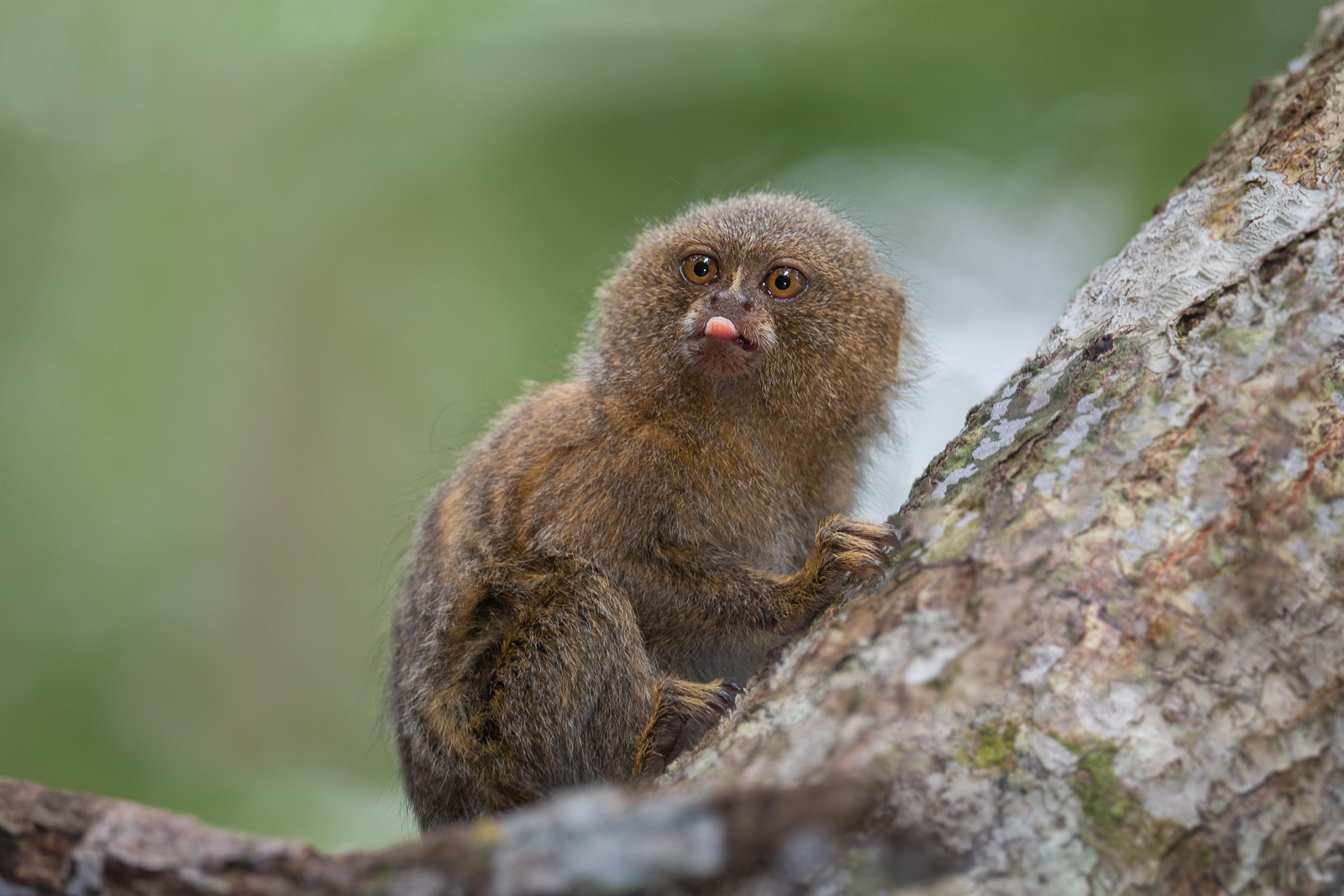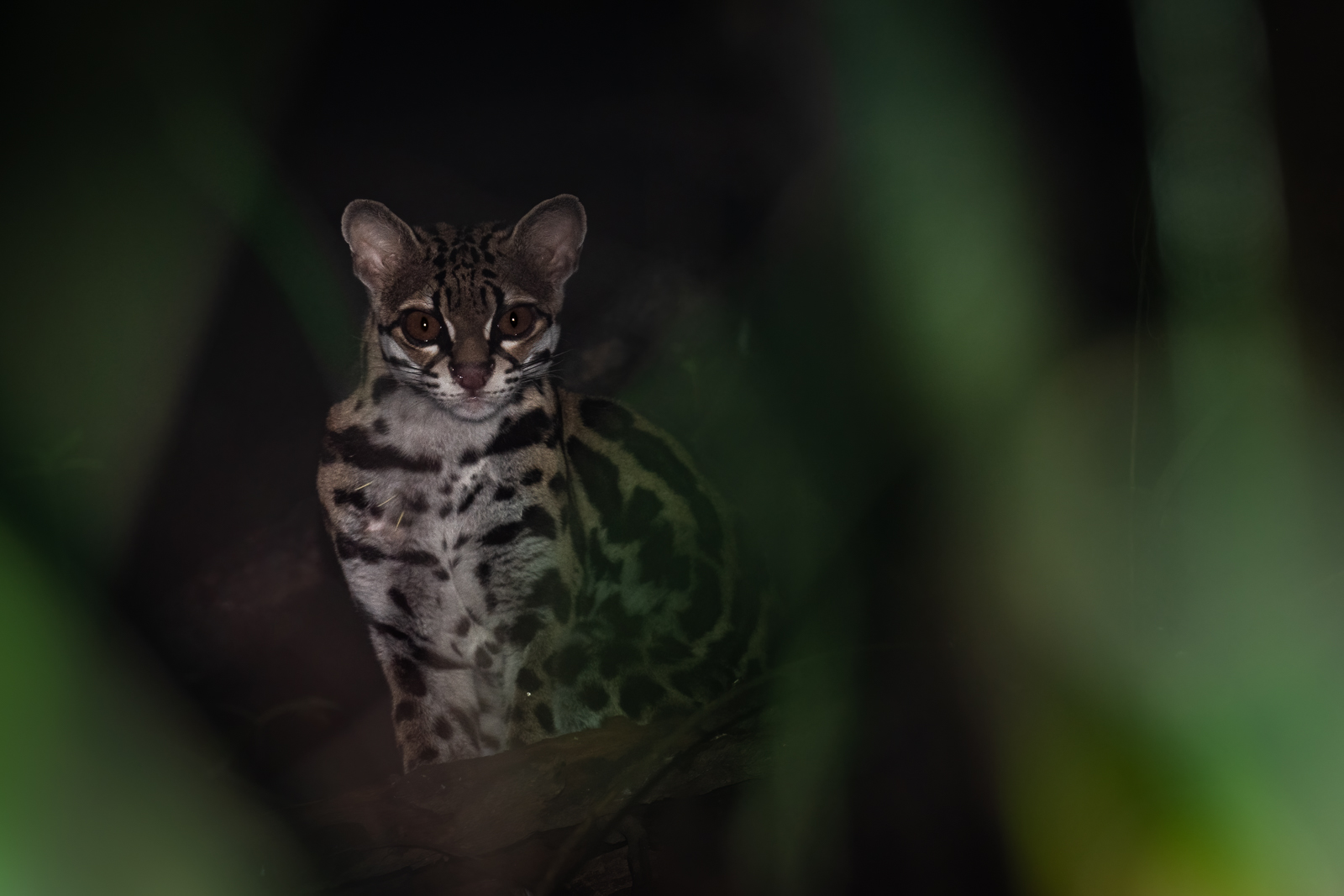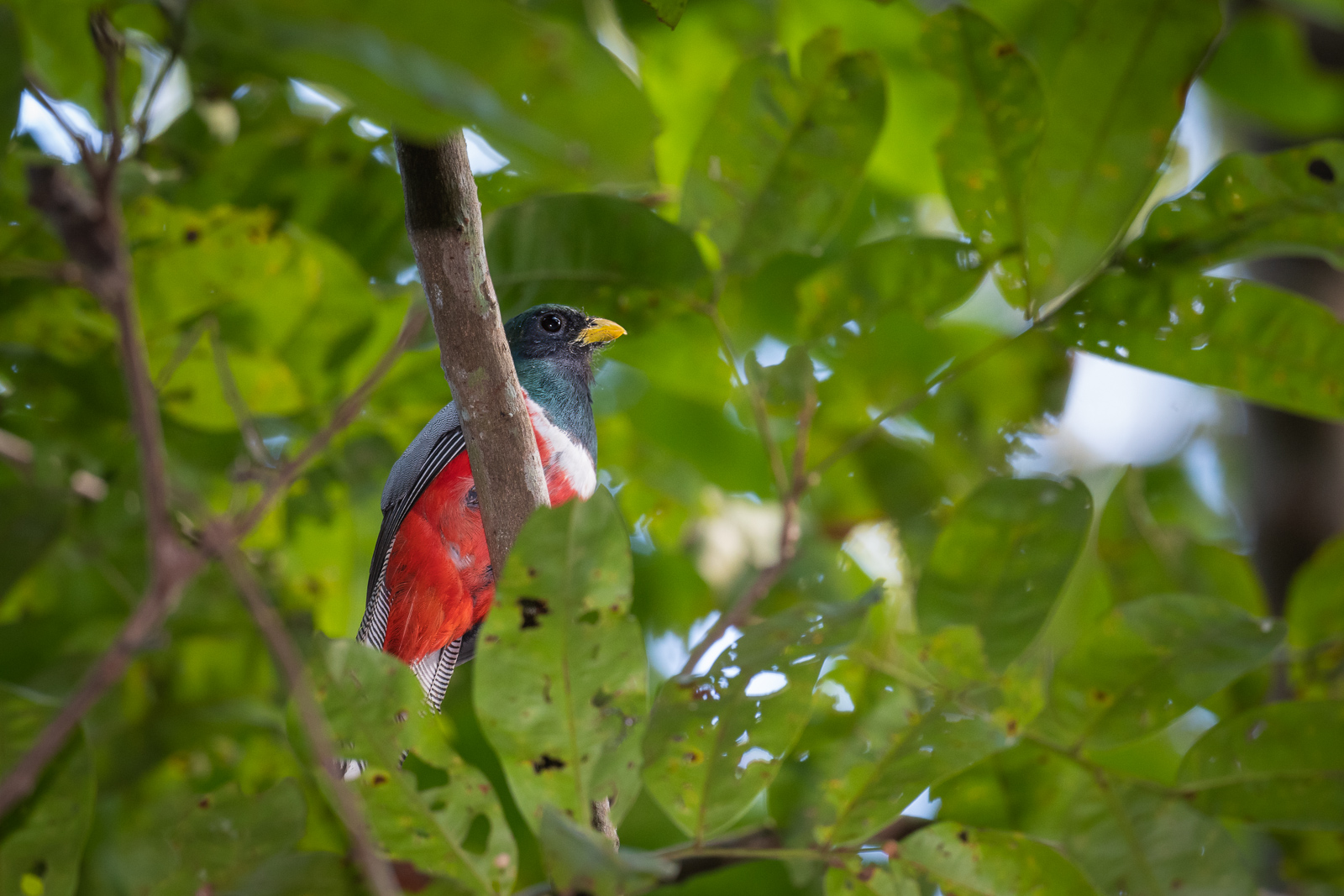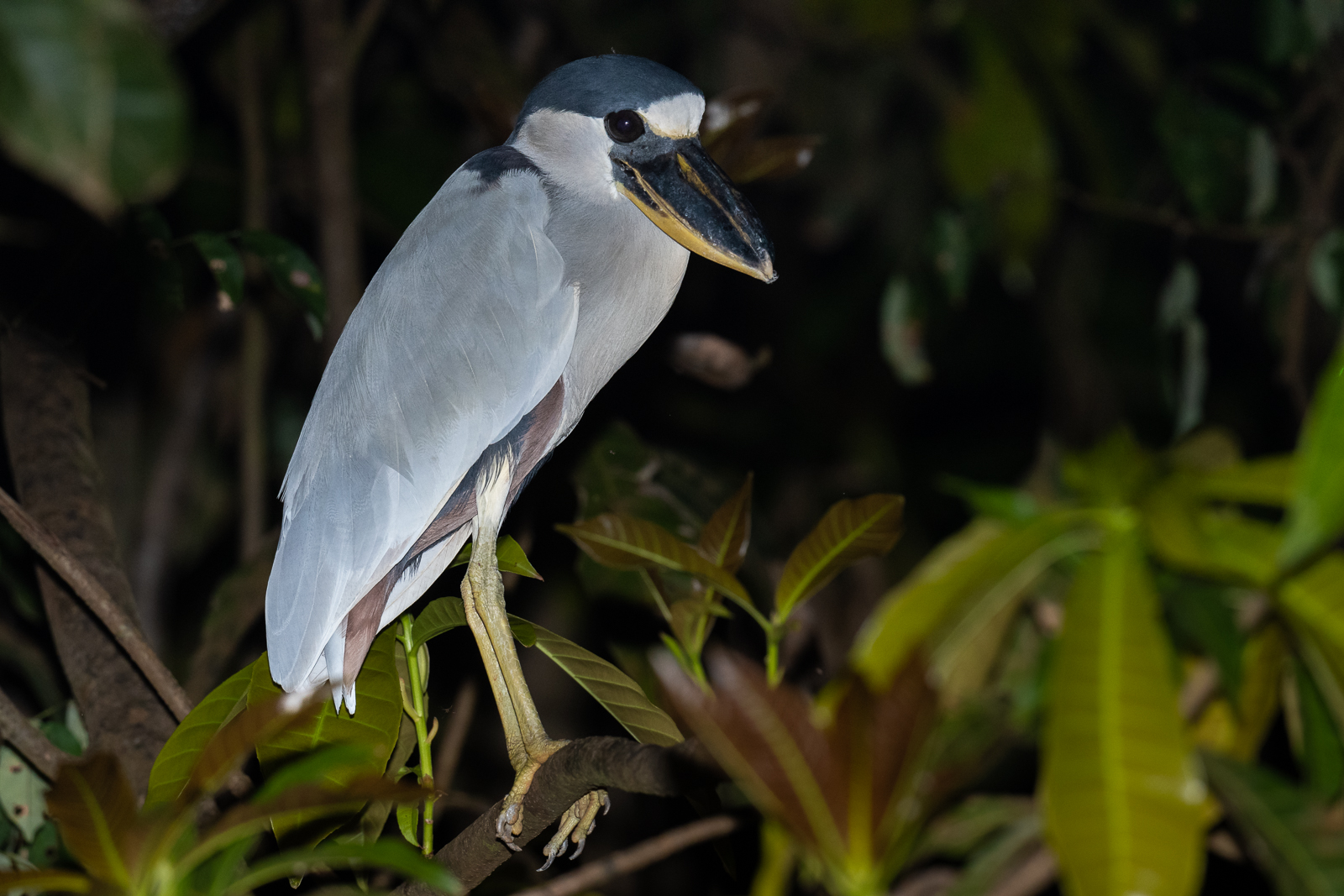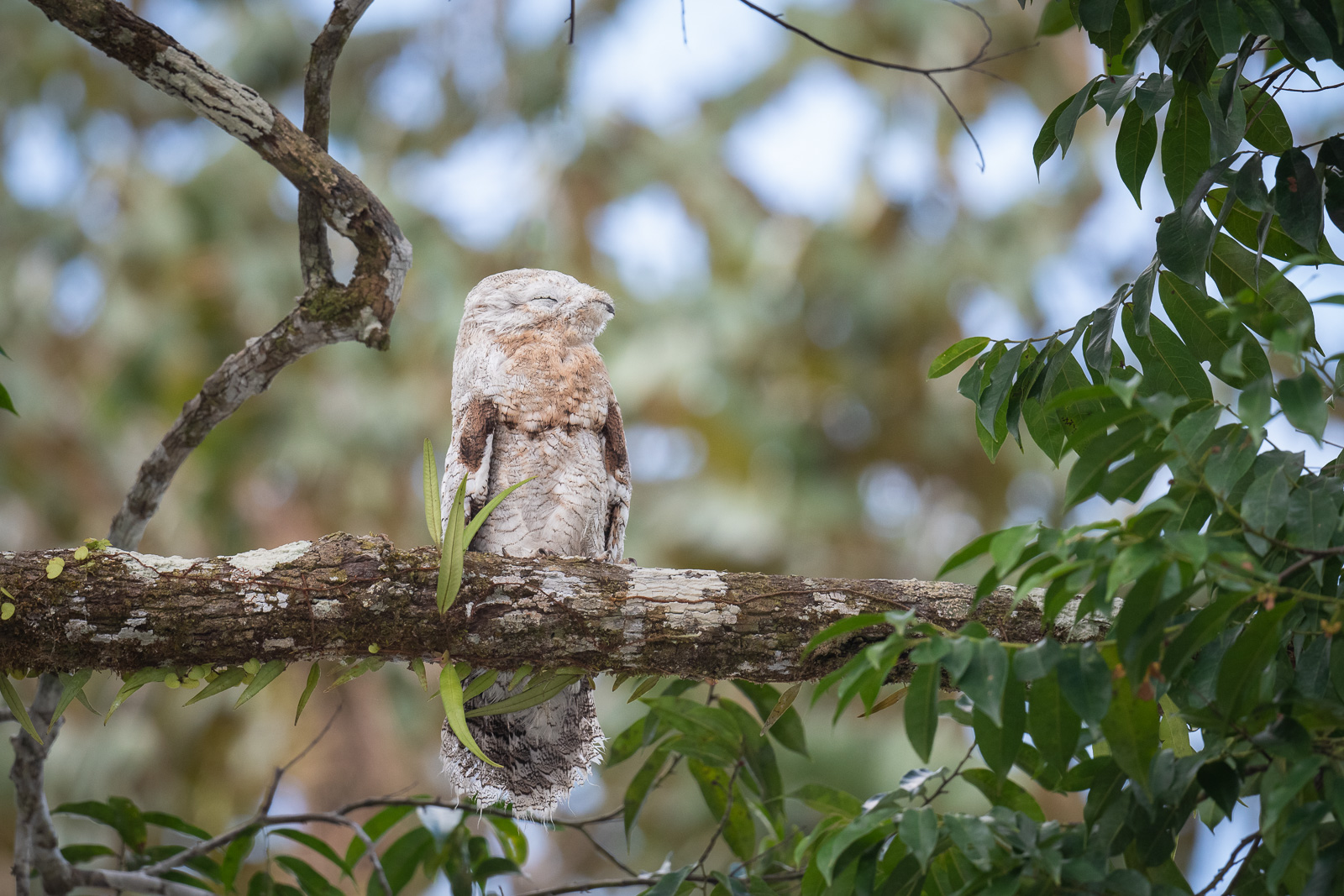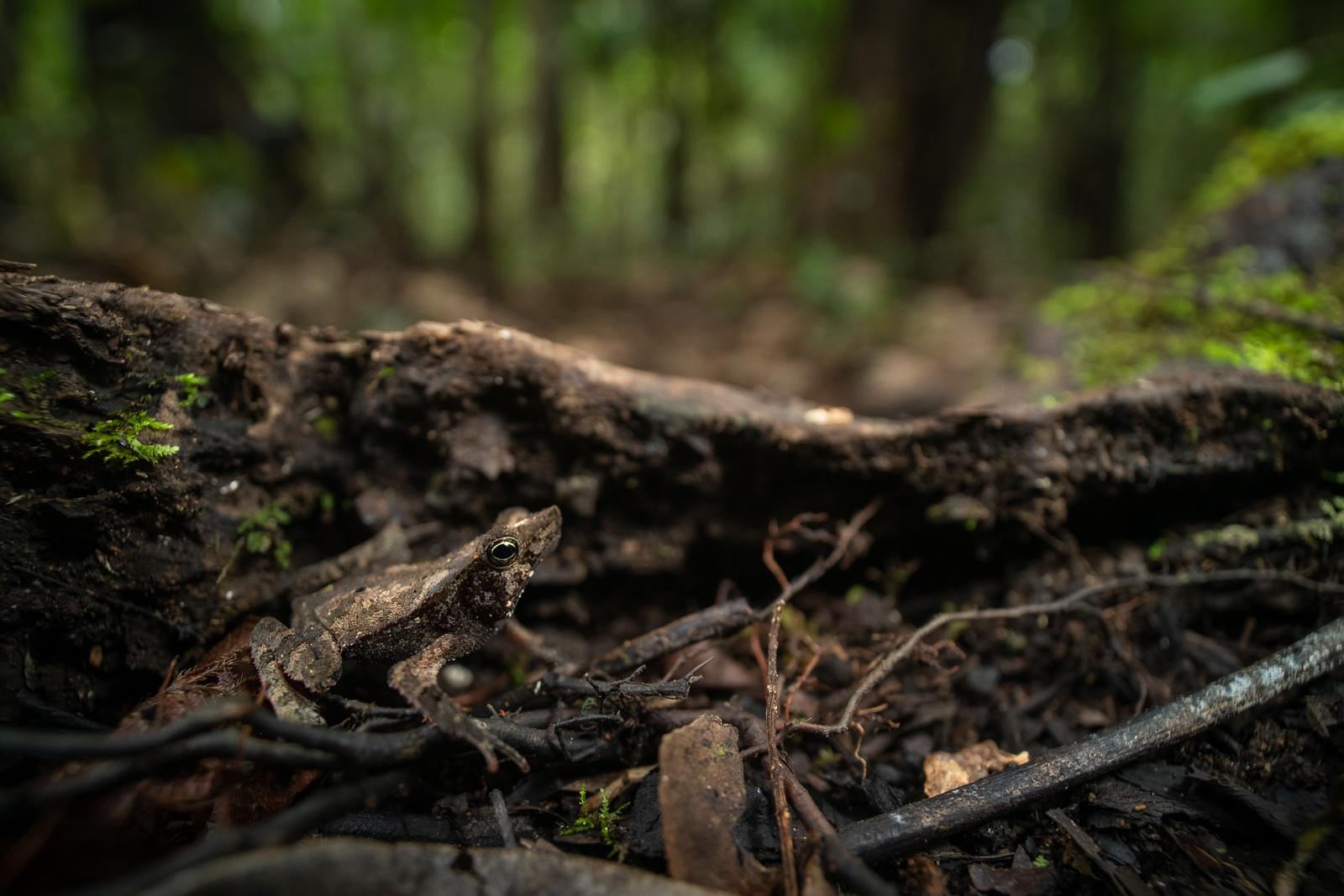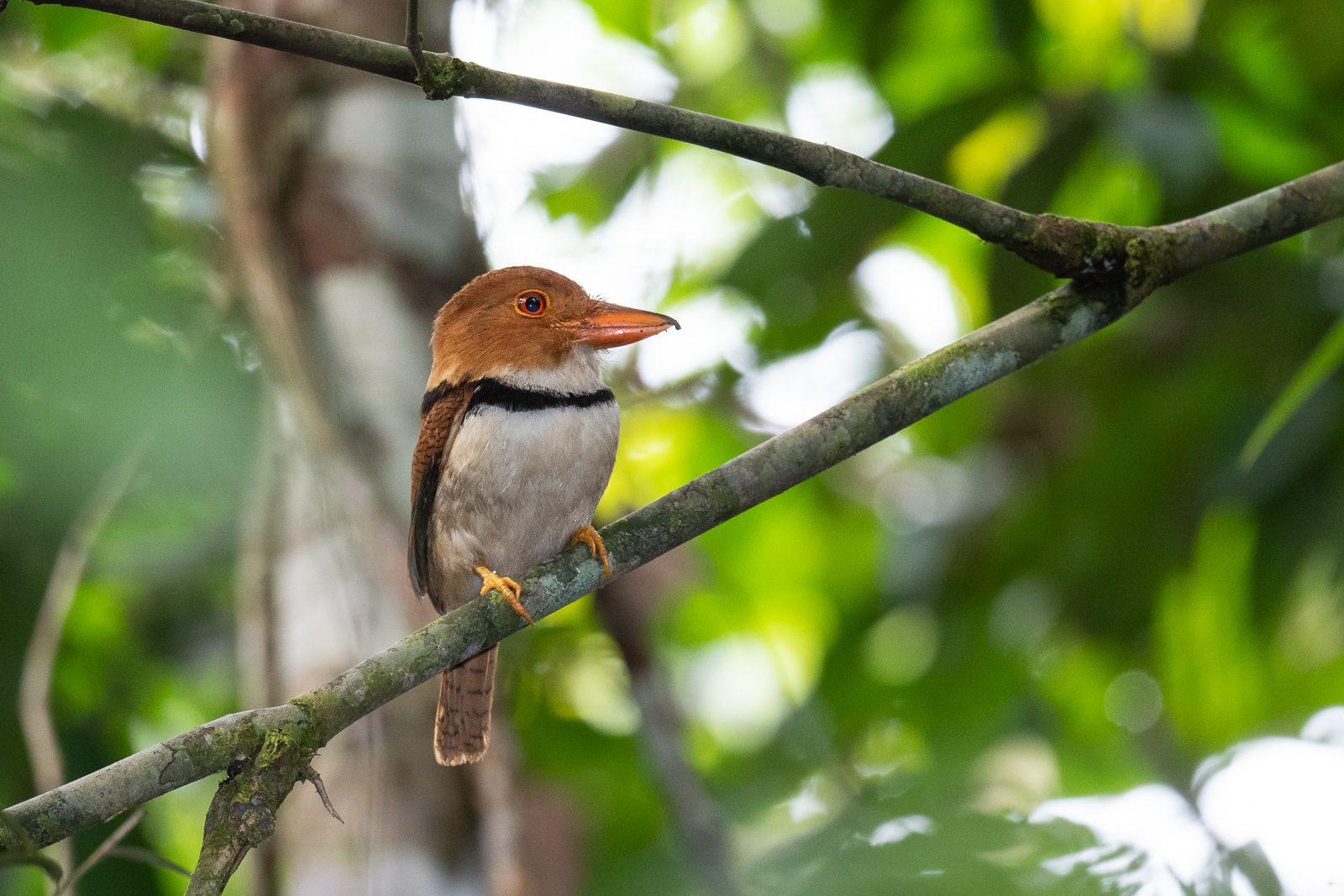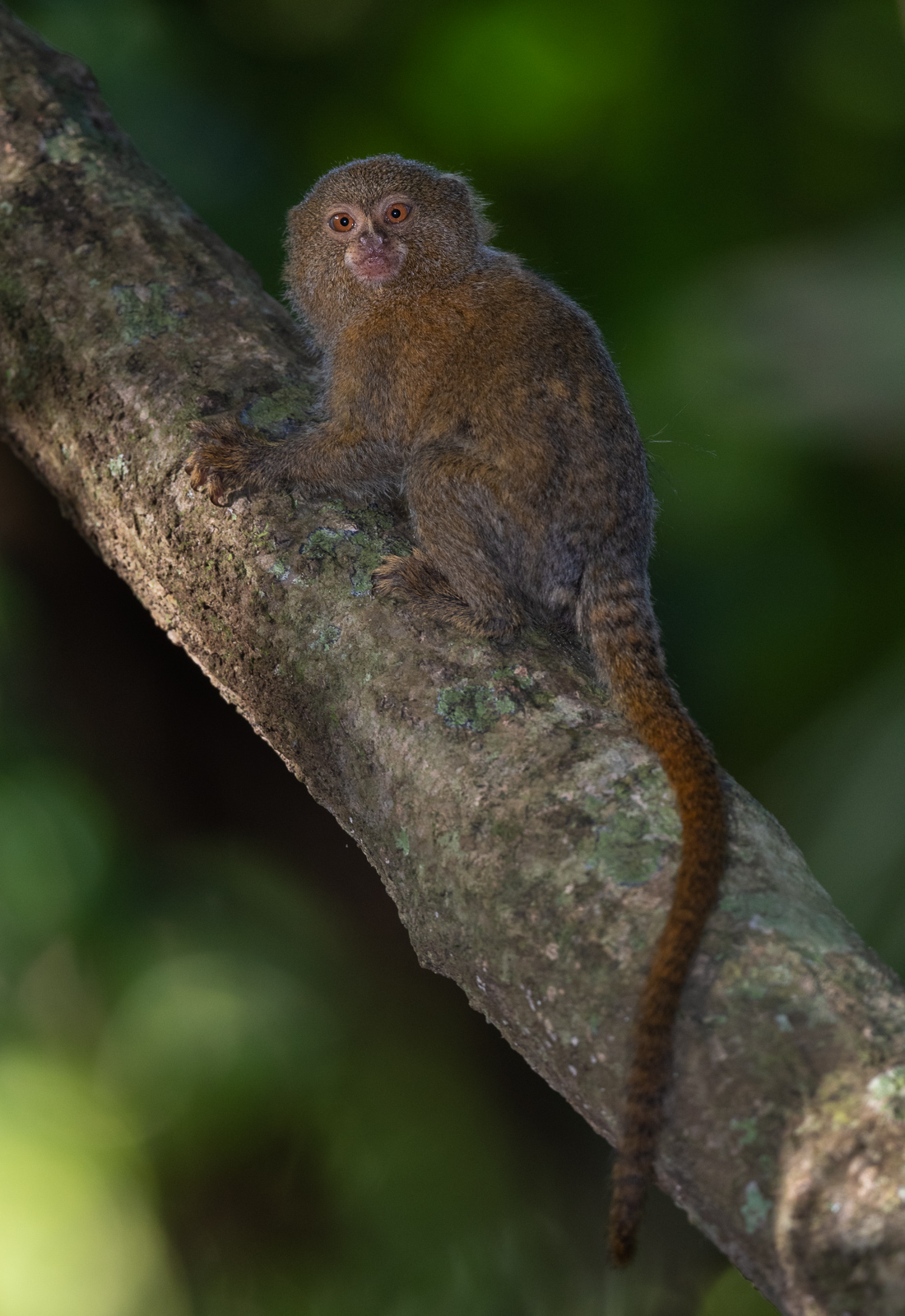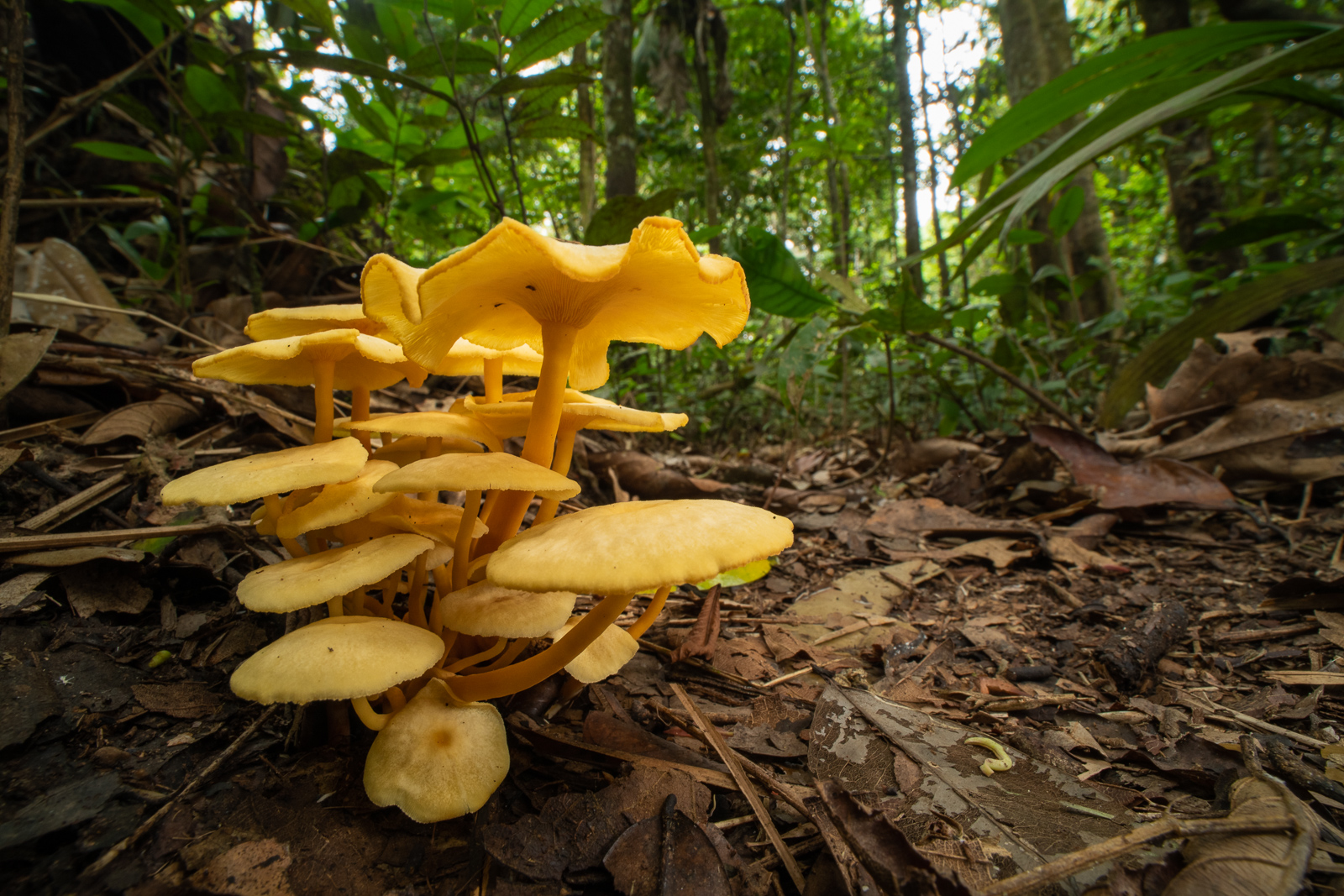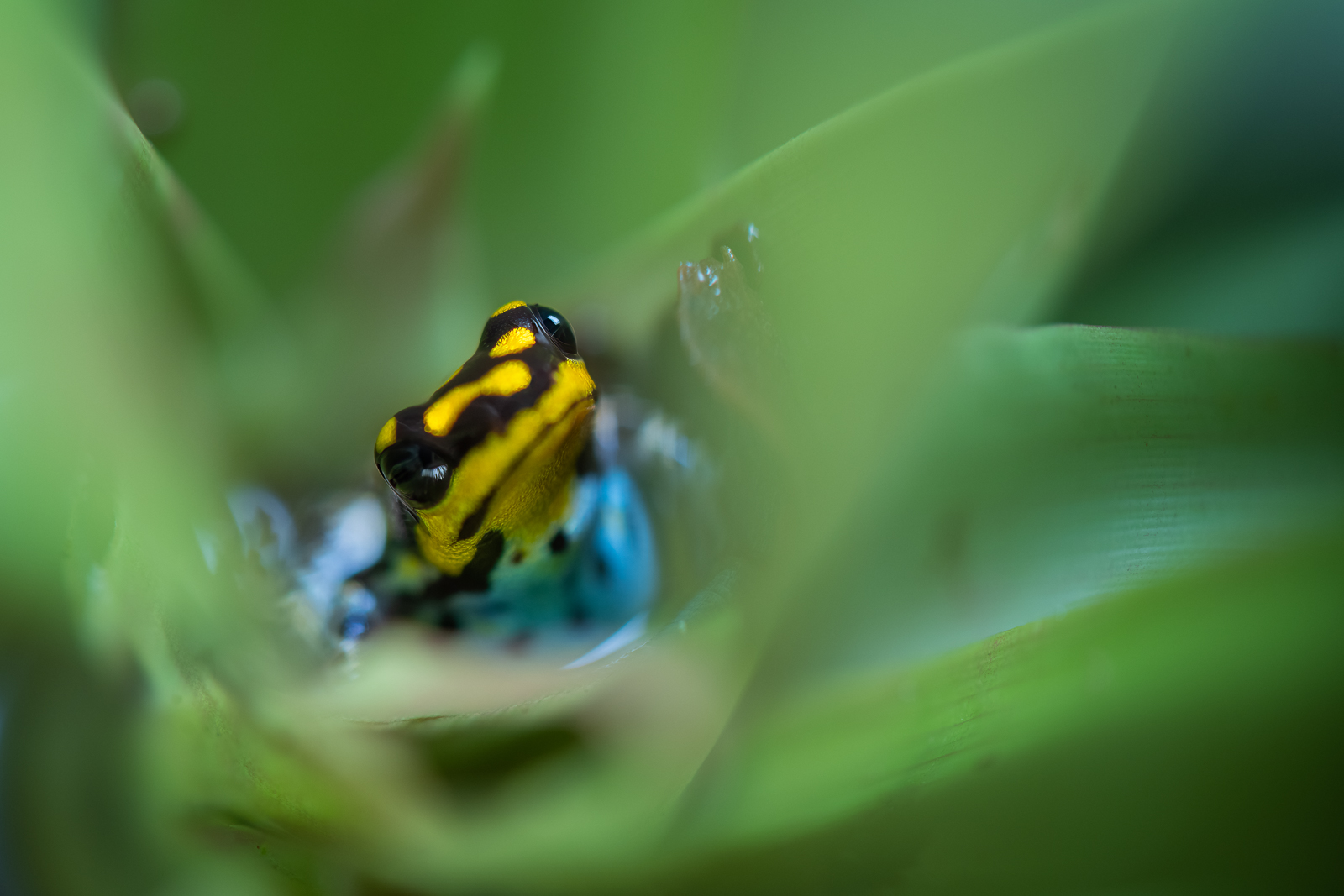Ocelot, Take 2 *(Correction—Margay)
 Here’s another photo from my ocelot encounter when I was in the Peruvian Amazon back in late October. This exposure seemed to be a bit brighter than the first one I shared. As mentioned previously, this was one of the more exciting sightings of my years in the wild — spotted along a river bank while heading back to the lodge late at night. I didn’t actually see the ocelot from the boat, but my guide did, so we set out on foot and after searching around for about five minutes, we saw it again in the rainforest where it posed for a few portraits. Note the three porcupine quills stuck in the ocelot’s right shoulder, no doubt a lesson learned. Nikon D500 with Nikkor 500mm PF lens, ISO 800, f/8 at 1/125th of a second, Godox V860iii flash on a remote bracket.
Here’s another photo from my ocelot encounter when I was in the Peruvian Amazon back in late October. This exposure seemed to be a bit brighter than the first one I shared. As mentioned previously, this was one of the more exciting sightings of my years in the wild — spotted along a river bank while heading back to the lodge late at night. I didn’t actually see the ocelot from the boat, but my guide did, so we set out on foot and after searching around for about five minutes, we saw it again in the rainforest where it posed for a few portraits. Note the three porcupine quills stuck in the ocelot’s right shoulder, no doubt a lesson learned. Nikon D500 with Nikkor 500mm PF lens, ISO 800, f/8 at 1/125th of a second, Godox V860iii flash on a remote bracket.
*Some wild cat experts saw this post and believe it to actually be a margay, an even more rare cat to see in the wild. It looks very similar to an ocelot, but smaller and with bigger eyes. The definitive way to tell the difference is the tail, but I didn’t get any shots of the tail.
Boat-Billed Heron
 The boat-billed heron, or boatbill, is a nocturnal heron living in Central and South America. We saw one or two of these large birds each time we took the boat out at night in the Peruvian Amazon. They obviously get their name from that oddly shaped scoop-like bill. They feed on everything from smaller mammals to frogs, insects, crabs and fish. Nikon D500 with Nikkor 500mm PF lens, ISO 1600, f/6.3 at 1/125th of a second, Godox V860iii flash.
The boat-billed heron, or boatbill, is a nocturnal heron living in Central and South America. We saw one or two of these large birds each time we took the boat out at night in the Peruvian Amazon. They obviously get their name from that oddly shaped scoop-like bill. They feed on everything from smaller mammals to frogs, insects, crabs and fish. Nikon D500 with Nikkor 500mm PF lens, ISO 1600, f/6.3 at 1/125th of a second, Godox V860iii flash.
Common Potoo
 Potoos are known for their comically cartoonish mouths and big yellow eyes. Neither of which you can see when they’re asleep. Which is when this photo was taken. The large owl-like bird was in a tree just outside my room in the Peruvian Amazon, and doing exactly what potoos do — sleeping during the day. I was hoping to get another glimpse when the potoo woke up at night but my timing was off and I missed the opportunity. Until next time. And by the way, you can see the closed eye and beak if you look close (head is in profile and facing toward the right edge of the frame). Nikon D500 with Nikkor 500mm PF lens, ISO 800, f/5.6 at 1/800th of a second, Godox V860iii fill flash.
Potoos are known for their comically cartoonish mouths and big yellow eyes. Neither of which you can see when they’re asleep. Which is when this photo was taken. The large owl-like bird was in a tree just outside my room in the Peruvian Amazon, and doing exactly what potoos do — sleeping during the day. I was hoping to get another glimpse when the potoo woke up at night but my timing was off and I missed the opportunity. Until next time. And by the way, you can see the closed eye and beak if you look close (head is in profile and facing toward the right edge of the frame). Nikon D500 with Nikkor 500mm PF lens, ISO 800, f/5.6 at 1/800th of a second, Godox V860iii fill flash.
Sharp-Nosed Toad
 I saw a couple of these tiny toads (about half an inch in length). They live in the leaf litter on the ground in the Amazon rainforest. For this image, the toad is almost right up against the front element of my wide-angle macro lens. That shelf behind the toad is a tree root. Nikon D850 with Laowa 15mm lens, ISO 1600, unrecorded f/stop at 1/125th of a second, Godox V860iii flash with Westcott soft box.
I saw a couple of these tiny toads (about half an inch in length). They live in the leaf litter on the ground in the Amazon rainforest. For this image, the toad is almost right up against the front element of my wide-angle macro lens. That shelf behind the toad is a tree root. Nikon D850 with Laowa 15mm lens, ISO 1600, unrecorded f/stop at 1/125th of a second, Godox V860iii flash with Westcott soft box.
Collared Puffbird
 This little guy is called the collared puffbird and was photographed on my recent trip to the northern Amazon basin of Peru. Not too much to say other than they prey upon frogs, lizards, snakes and larger insects — your usual Amazonian cuisine. That, and they have quite a large head in relation to body size. Nikon D500 with Nikkor 500mm PF lens, ISO 1600, f/5.6 at 1/200th of a second, Godox V860iii fill flash.
This little guy is called the collared puffbird and was photographed on my recent trip to the northern Amazon basin of Peru. Not too much to say other than they prey upon frogs, lizards, snakes and larger insects — your usual Amazonian cuisine. That, and they have quite a large head in relation to body size. Nikon D500 with Nikkor 500mm PF lens, ISO 1600, f/5.6 at 1/200th of a second, Godox V860iii fill flash.
Pygmy Marmoset
 I had mentioned in a previous post that pygmy marmosets are only five inches in length, not including the tail. Here you can see the additional eight inches of tail. This guy was out doing what they do — gnawing holes in trees to eat the resultant tree gum. They also eat nectar and fruit, and insects that are attracted to the sap holes they produce. Photographed in the northern Amazon basin of Peru. Nikon D500 with Nikkor 500mm PF lens, ISO 800, f/5.6 at 1/125th of a second, Godox V860iii fill flash.
I had mentioned in a previous post that pygmy marmosets are only five inches in length, not including the tail. Here you can see the additional eight inches of tail. This guy was out doing what they do — gnawing holes in trees to eat the resultant tree gum. They also eat nectar and fruit, and insects that are attracted to the sap holes they produce. Photographed in the northern Amazon basin of Peru. Nikon D500 with Nikkor 500mm PF lens, ISO 800, f/5.6 at 1/125th of a second, Godox V860iii fill flash.
Yellow Mushrooms
 Here’s another mushroom landscape from the Peruvian Amazon using my wide-angle macro lens. I couldn’t identify the exact species of fungi, but to me they kind of looked like potato chips. Nikon D850 with Laowa 15mm wide-angle macro lens, ISO 500, f/22 at 1/5th of a second, Godox V860iii flash with Westcott soft box.
Here’s another mushroom landscape from the Peruvian Amazon using my wide-angle macro lens. I couldn’t identify the exact species of fungi, but to me they kind of looked like potato chips. Nikon D850 with Laowa 15mm wide-angle macro lens, ISO 500, f/22 at 1/5th of a second, Godox V860iii flash with Westcott soft box.
Poison Dart Frog (The Yellow One)
 I posted a wide-angle shot of this frog a few weeks ago. Here’s more of a macro look. The scientific name for this frog is Ranitomeya flavovittata and surprisingly it doesn’t have any common name. The guides simply referred to it as the yellow one. They live inside bromeliad plants where water pools at the center of the leaves. Nikon D850 with Nikkor 105mm macro lens, ISO 400, f/8 at 1/60th of a second, Godox V860iii flash with Westcott soft box.
I posted a wide-angle shot of this frog a few weeks ago. Here’s more of a macro look. The scientific name for this frog is Ranitomeya flavovittata and surprisingly it doesn’t have any common name. The guides simply referred to it as the yellow one. They live inside bromeliad plants where water pools at the center of the leaves. Nikon D850 with Nikkor 105mm macro lens, ISO 400, f/8 at 1/60th of a second, Godox V860iii flash with Westcott soft box.


